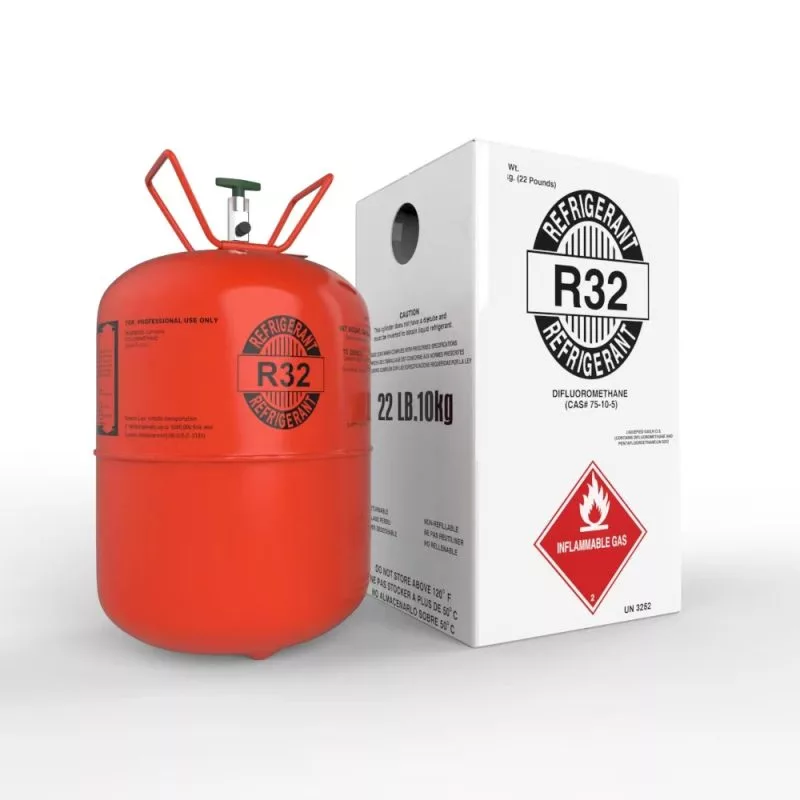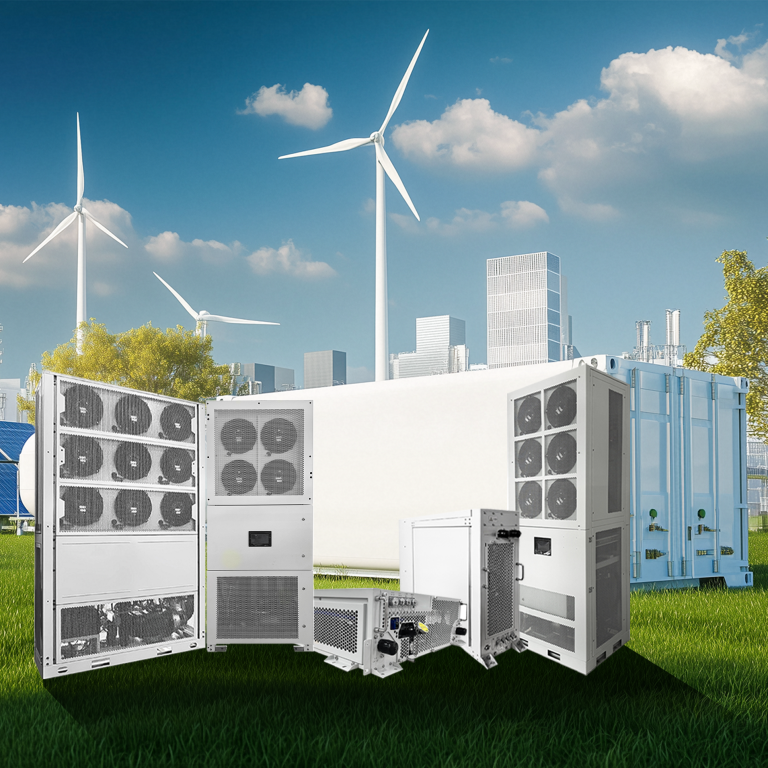 |
R32 refrigerant, also known as Difluoromethane (HFC-32), has become a prominent choice in the air conditioning and refrigeration industry due to its environmental friendliness, high efficiency, and wide range of applications. Below, we explore its key features, applications, technical parameters, and environmental impact. |
Introduction to R32 Refrigerant
R32 is a hydrofluorocarbon (HFC) refrigerant with a chemical formula of CH₂F₂. It is a single-component refrigerant commonly used in air conditioning and refrigeration systems. R32 boasts several advantages, including a zero Ozone Depletion Potential (ODP) and a relatively low Global Warming Potential (GWP) of 675, making it a greener alternative to older refrigerants such as R410A (GWP 2088) and R22 (higher GWP).
R32 is colorless and transparent in liquid form under pressure and a gas under normal temperatures. Its superior heat transfer properties, high energy efficiency, and compact system requirements position it as a leading refrigerant choice in modern HVAC technology.
Key Features of R32 Refrigerant
- Environmental Characteristics
- Zero Ozone Depletion Potential (ODP): R32 does not harm the ozone layer.
- Lower Global Warming Potential (GWP): At 675, R32 has a significantly smaller carbon footprint compared to traditional refrigerants like R410A and R22.
- Compliance with international protocols like the Kigali Amendment to the Montreal Protocol.
- Physical Properties
- Boiling Point: -51.6°C
- Critical Temperature: 78.4°C
- Solubility: Easily soluble in oils but less soluble in water.
- Energy Efficiency
- R32 has a 20% higher cooling capacity per unit volume compared to R410A, requiring less refrigerant charge.
- Its superior thermodynamic performance allows for smaller, more compact systems.
- Safety
- R32 is classified as A2L, indicating mild flammability. While it requires adherence to specific handling and installation safety protocols, it remains a reliable refrigerant when used appropriately.
Applications of R32 Refrigerant
R32 is widely utilized across multiple sectors:
| Application Area | Usage Examples |
|---|---|
| Residential Air Conditioning | Split and window air conditioners for home cooling. |
| Commercial HVAC Systems | Ducted systems, variable refrigerant flow (VRF) units, and rooftop chillers. |
| Heat Pumps | Air-to-air and air-to-water systems for heating and cooling. |
| Refrigeration Systems | Light commercial refrigeration, cold water chillers, and display cabinets. |
| Industrial Systems | Replacement for HCFC-22 in medium-to-low temperature systems. |
Technical Parameters of R32
| Property | Value |
|---|---|
| Molecular Weight | 52.02 |
| Boiling Point | -51.6°C |
| Critical Temperature | 78.4°C |
| Critical Pressure | 5.78 MPa |
| Density (Liquid at 25°C) | 1.118 g/cm³ |
| Ozone Depletion Potential (ODP) | 0 |
| Global Warming Potential (GWP) | 675 |
Environmental Impact of R32
R32 is lauded for its environmental benefits:
- Reduced Greenhouse Gas Emissions: Its low GWP significantly minimizes its contribution to climate change compared to R410A.
- Compliance with Environmental Policies: Supports global sustainability initiatives, including the Kigali Amendment and EU F-Gas Regulation.
- Energy Efficiency: Systems using R32 consume less electricity, further reducing carbon emissions.
Countries Using R32 Refrigerant
R32 has been widely adopted in regions with stringent environmental regulations and advanced HVAC industries:
- Japan: A pioneer in R32 adoption, utilizing it in the majority of its residential air conditioning systems.
- European Union: A popular refrigerant due to strict F-Gas regulations aimed at phasing out high-GWP alternatives.
- United States: Increasing adoption in residential and commercial HVAC systems for sustainability compliance.
- Australia: R32 is widely used in home air conditioning systems due to its energy efficiency and low GWP.
- China: With the world’s largest HVAC market, China is transitioning to R32 as part of its commitment to reducing emissions.
Additional Resources
For more insights on R32 refrigerant, check these resources:
- ASHRAE – R32 Properties and Safety
- European Fluorocarbons Technical Co
mmittee (EFCTC) – R32 Information - Daikin – R32 Refrigerant Introduction
- Cooling Post – Updates on R32 Usage
- Australian Government – R32 and HVAC Sustainability
- Green Cooling Initiative – Alternative Refrigerants Overview
- HVAC Insider – Comparing R32 with Other Refrigerants





